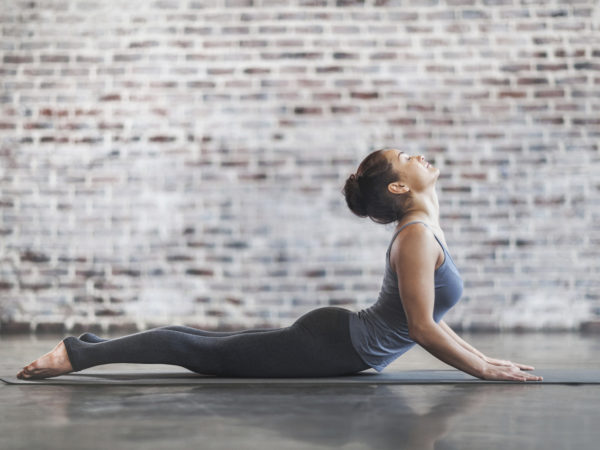Is Yoga Safe?
I’ve been considering yoga as a means of relieving my lower back pain, but now I hear that it can make matters worse. Should I try it anyway?
Andrew Weil, M.D. | January 3, 2017

It’s true that you can hurt yourself doing yoga, but chances are you won’t, and I wouldn’t let fear of injury hold you back. Overall, yoga is relatively safe and injuries are relatively rare. Two recent studies that looked at yoga-related injuries concluded that you’re more likely to benefit from yoga than hurt yourself.
The more recent one, from the University of Sydney in Australia and Mercy College in New York, found that yoga leads to musculoskeletal pain in 10 percent of people and worsens 21 percent of existing injuries. However, 74 percent of the people participating in the study reported that yoga helped alleviate their existing pain. The researchers collected their data from 354 participants via two electronic questionnaires, given one-year apart in two yoga studios. They reported that most of the “new” yoga pain occurred in the shoulder, elbow, wrist and hand, which they suggested might have been due to the Downward Dog and similar postures that put weight on the upper limbs. They also reported that more than one-third of the cases of pain were serious enough to prevent further participation in yoga and lasted more than three months. They encouraged yoga participants to discuss the risk of injuries and any pre-existing pain with instructors to explore posture modifications for greater safety.
An earlier study, from the University of Alabama, Birmingham published in November 2016, looked at the rate of yoga injuries in the U.S. over a 13-year span as compiled by the National Electronic Injury Surveillance System. While the researchers found that the injury rate has been increasing over time, they suggested that the upswing might simply reflect the rising popularity of yoga. The study found that the rate of yoga-related injuries increased to 17 per 100,000 participants in 2014 compared to 10 per 100,000 in 2001. All told, there were 29,590 injuries over the 13 years, nearly half of which affected the trunk, while sprains or strains accounted for 45 percent. The injury rate was highest – 58 per 100,000 – among participants age 65 and older. It was 18 per 100,000 among those ages 45-64, and 12 per 100,000 in those 18-44. The researchers noted, however, that the actual overall risk might be higher, since they surveyed only individuals who sought medical attention in an emergency department.
“Yoga is harder and more demanding than some people believe,” study co-author Gerald McGwin, Ph.D., said in a press release that accompanied publication of the results in the Orthopedic Journal of Sports Medicine. He added that yoga participants need a realistic view of their own abilities to understand that “some poses might be too challenging and inappropriate. A qualified, certified yoga instructor can help you with that assessment and is essential to a safe experience.”
I have seen a small number of cases of joint problems stemming from the overenthusiastic practice of yoga. Certain postures can stress the neck, knees, and lower back if you perform them too strenuously or hold them for too long, especially if you do not increase your flexibility slowly through gradual practice. With yoga, as with any form of exercise, you must listen to your body. If you notice that one posture gives you persistent pain, stop doing it. Never let anyone, even a respected yoga teacher, force your body into a posture that causes significant pain.
Andrew Weil, M.D.
Sources:
Marc Campo et al, “Musculoskeletal pain associated with recreational yoga participation: A prospective cohort study with 1-year follow-up.” Journal of Bodywork and Movement Therapies, 2017; DOI: 10.1016/j.jbmt.2017.05.022
Thomas A. Swain and Gerald McGwin. “Yoga-Related Injuries in the United States From 2001 to 2014”. Orthopaedic Journal of Sports Medicine, November 16, 2016; 4 (11) DOI: 10.1177/2325967116671703












